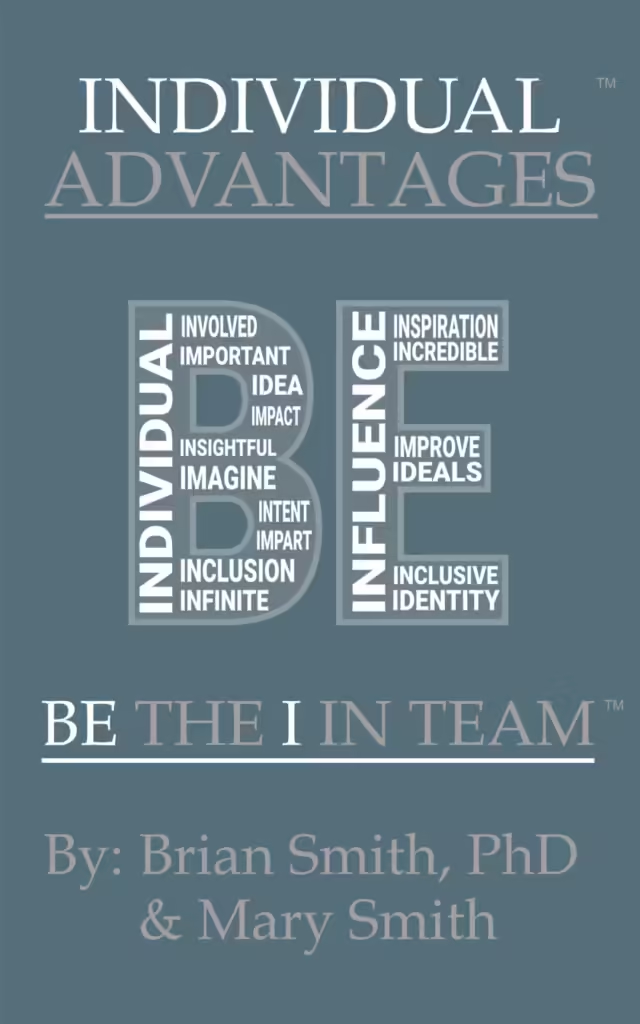By Brian Smith and Mary Smith

Brian Smith & Mary Smith
Brian Smith, PhD, is founder and senior managing partner of IA Business Advisors, a management consulting firm that has worked with more than 18,000 CEOs, entrepreneurs, managers and employees worldwide. Together with his daughter, Mary Smith, he has authored his latest book, Individual Advantages: Be the “I” in Team (BookBaby, March 2, 2021). Learn more at iabusinessadvisors.com.
Improved Quality Begins with Establishing Values- The holy grail today in business is quality: Quality of service, products, and experience. Additionally, businesses must contend with public perceptions of quality. Many organizations try to manage their perception of quality rather than actually attempting to create quality.
Competition has migrated from involving only your competitors to the reviews or posts that your business receives on the internet. This shift has helped to develop a new focus on customer experience and quality, in which you’re only as good as the newly empowered public deems you in your latest review.
Meanwhile, companies react to reviews inconsistently. Customer reviews are oftentimes fueled by emotions, and, as such, trigger emotions in the receiver as well. Some business people take personally the comments made public and this creates the potential to react out of character. In fact, the entire review sequence can be out of character for the writer and receiver to the point where you might wonder whether the experience was truly life-changingly detrimental to the person instead of just experiencing a cold hamburger, a temperamental desk clerk, or a forgotten item in a shopping cart.
Cycles of poor service communication are only exacerbated by their public nature and they challenge businesses and their employees to remain objective and positive. When faced with a client that’s struggling with quality issues, it’s best for the organization do a “values check.”



Use the word “values” with people today and it takes on many different meanings. Similar to the definitions associated with quality, values too are subjective. Regardless of what values you want to embed in your organization, if you set some standard principles, teach them to your team, and require that they be upheld consistently, then quality will improve dramatically.
A value proposition isn’t something reserved only for the customer. Your team must understand that when mistakes happen, they need only to fall back on the values that support positivity in the organization. As a result, the reaction to issues of quality will be a positive learning experience and not an emotional one.
When a staff member who’s supported by a values-driven organizational culture faces a quality issue, the person can handle it in a way that aligns with the company’s values. The reaction and attention to the issue will become more positive and the end result will be a team that handles quality issues openly, directly, and positively — which customers will notice.
Instilling a values-driven response to the way in which your team communicates with a dissatisfied customer can help in maintaining a more supportive approach towards any customer displeasure, even when that customer is emotional.
When creating an organizational value statement, it’s best to connect your statement to words that support the issues your team may actually face. Honesty and hard work, for example, expect behaviors, but neither have much to do with the quality of service or the quality of a product. For these considerations, the perception of quality matters, and the team must be able to apply and uphold the organization’s values in any situation with customers.
Yes, if you brag that you have the cleanest restaurant in town, and you also say that your company values honesty, you could set yourself up to be challenged as dishonest when a customer finds a dirty bathroom or a wad of gum under the table.
Your value statement must support behavior that instills pride and consistency in each team member’s actions. Those actions need to include the act of providing excellent service to customers in delivering your product. And also when faced with a dissatisfied customer. This means that your value statement must support the actions taken by your team in both good situations and bad. In a way that will continuously support quality in every interaction.
Consider including these components within your value statement to allow your team to better uphold quality across your organization:
1. Teaching Mindfulness. One value that supports quality in an organization is Mindfulness. Yes, Mindfulness can be a part of a company’s value proposition because it instills a number of behaviors that support reacting to situations positively, even during stressful moments. When you teach and support mindfulness, you teach and support another key value proposition: situation awareness.
2. Developing situation awareness. Situation awareness is when you slow down long enough to become aware of all that’s happening in the present moment. You become mindful and focused on the task or the conversation at hand. And better able to react calmly and thoughtfully.
3. Maintaining consistency. In addition, an important element of any value-driven organization is maintaining consistency. To achieve consistency an organization needs policies, procedures, and structure. Consistency begins with standardized training and ends with unvarying accountability.
Including Mindfulness, situation awareness, and consistency in your value statement. Along with other no-brainers such as honesty, integrity, and hard work, will provide your team with value-driven tools. They can apply in all situations and, as a result, will expand the quality provided through your organization.
FOLLOW US ON INSTAGRAM: BIZEMAG
